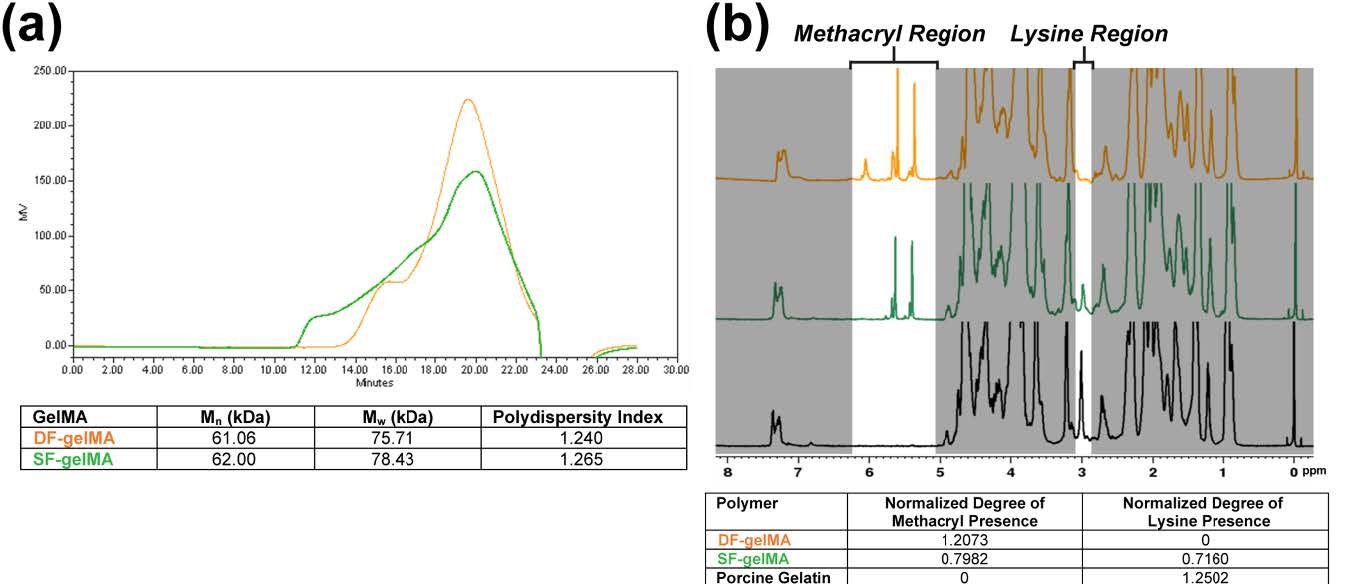Human gelatin-based composite hydrogels for osteochondral tissue engineering and their adaptation into bioinks for extrusion, inkjet, and digital light processing bioprinting
Bedell, M, et. al. 2022 Biofabrication 14 045012 doi: 10.1088/1758-5090/ac8768

Researchers utilized Huma OsteoGelMA as the base of novel bioink formulations for osteochondral tissue engineering systems. When compared with porcine gelMA, results showed the relative integrals from three peaks present in the human gelMA spectra indicated a higher total degree of methacrylation and methacryloylation compared to the two peaks present in the methacryl region for the porcine gelMA. Due to the double-functionalization of the human gelMA, its ability to maintain crosslinked gel integrity over extended incubation periods, and its favorable outcomes in terms of viability and calcium deposition, it was selected as the primary bioink backbone polymer for all subsequent differentiation and printability investigations. This study indicate the potential of these novel composite hydrogel formulations using human gelMA as the base polymer for promoting osteochondral phenotypes and enabling the bioprinting of viable, cell-encapsulating constructs using multiple 3D printing methods.
![]()
